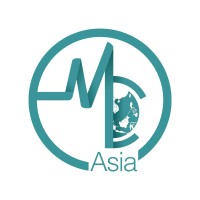Common refractive errors today include myopia, hyperopia and astigmatism, of which myopia is most prevalent in Asians. Myopia or near-sightedness is when near-vision is normal but distant objects become blurry. Conversely, hyperopia or far-sightedness is when you can see distant objects clearly but near objects are blurry. Astigmatism occurs when there is uneven curvature of the cornea or lens; light rays cannot be focused properly leading to blurred near and distant vision.
LASIK and Implantable Contact Lenses have added a new dimension to the treatment of refractive errors. In contrast to traditional glasses and disposable contact lenses, these techniques provide a more permanent solution and better cosmetic outcomes.
What are LASIK and Implantable Contact Lenses?
LASIK stands for Laser-Assisted in Situ Keratomileusis. It is a widely used procedure to correct near-sightedness, far-sightedness, and astigmatism. The purpose of this surgery is to change the curvature of the cornea. This helps the cornea focus light more precisely on the retina to restore sharp vision.
Implantable contact lens (ICL) is an eye surgery where a contact lens is implanted inside the eye and provides excellent quality of vision. This procedure can also be done on patients who are unsuitable candidates for LASIK.
The following table serves as an overview to assess patients’ suitability for LASIK and ICL:
| LASIK | ICL | |
| Suitable Candidates | Age: ≥18 years | Age: 21 to 45 years old |
| Stable vision: no changes to degree for ≥1 year | ||
| Must not be pregnant or lactating: hormonal changes can cause visual fluctuations | ||
| Must not have medical condition/medication that affect wound healing: Certain conditions, such as autoimmune diseases (e.g., lupus, rheumatoid arthritis), immunodeficiency states (e.g., HIV), poorly controlled diabetes, and some medications (e.g., retinoic acid and steroids) may prevent proper healing after a refractive procedure. | ||
| Must have relatively good eye health: Doctor will decide on suitability to proceed with LASIK/ICL if you have had history of eye surgery, glaucoma, uveitis, iritis or other eye diseases | ||
| NOT for people with thin corneas, corneal scarring/disease | Suitable for people with thin corneas | |
NOT for people with high refractive errors
|
Suitable for people with high refractive errors *
|
|
| NOT for people who suffer from severe dry eye as LASIK may exacerbate condition | Suitable for people with chronic dry eyes | |
| N.A.
|
Anterior chamber depth ≥3mm: higher risk of glaucoma if too shallow | |
| Minimum corneal endothelial cell density must be met: there will be endothelial cell loss with surgery, predisposing to oedema | ||
Table 1: Suitable candidates for LASIK and ICL
Preoperative preparations
Before LASIK or ICL, a thorough eye check is done to check for refractive error, intra-ocular pressure, corneal thickness, shape amongst other criteria (Table 1). Eyedrops will be given to dilate the pupils of the eye for better examination. Patients are asked to discontinue wearing contact lens prior to the surgery (3 days for soft lenses, 14 days for hard lenses) because the contact lens can temporarily alter the shape of the cornea. It is important to determine the amount of correction required to normalise the power of the eye.
For ICL in particular, 2 weeks before the surgery, a quick and painless non-invasive laser procedure is performed to create a small opening in the periphery of the iris (iridotomy) to allow better aqueous flow in the eye. The insertion of the ICL may disrupt natural flow of fluid through the pupil and thus this is essential to prevent increase in intra-ocular pressure and glaucoma.
Understanding the Procedures
Both of these procedures are done on an outpatient basis, usually done under local anaesthesia i.e. anaesthetic medications are applied to the eyes directly. It takes less than an hour (~15mins per eye) to perform these surgeries.
LASIK: In this blade-less procedure, a corneal flap is created with the help of a laser. The flap is folded backwards to remove some corneal tissue and then laid back into place. This helps to change the shape of the cornea enabling the eye to focus light on the retina.
Implantable contact lens: An artificial contact lens is placed between the iris and natural lens of the eye through micro incisions. The addition of an extra lens to the eye helps to correct the refractive error. It is a technically difficult surgery and comparatively more invasive. However, it is useful in corneal diseases and high refractive errors where LASIK is unsuitable.
Cost
LASIK is generally cheaper than ICL. This is because the latter is customised to your prescription, involves more pre-operative assessments, anaesthetic support (mild sedation or general anaesthesia besides topical eyedrops) and possibly the use of an operating theatre. More specialised surgical expertise is required for ICL.
Recovery time
Patients usually see better immediately after LASIK Surgery but the best results are seen after seven to ten days of surgery. In the case of ICL, it requires about 24 hours for visual improvement. Full recovery of vision may take 3 to 6 months in some cases.
A 2017 study has claimed that overall, preoperative symptoms decreased significantly, and visual acuity excelled after LASIK. A meta-analysis discovered that 97% of patients achieved uncorrected visual acuity of 20/40, while 62% achieved 20/20.
Complications
As with all surgeries, LASIK and ICL may also result in certain complications:
LASIK
- Chronic dry eye
- New visual disturbances such as glare, haloes at night
- Corneal infection
- Flap complications e.g. flap displacement, diffuse lamellar keratitis, or epithelial ingrowth.
Implantable contact lens (ICL)
- Eye infection (known as endophthalmitis)
- Cataracts
- Glaucoma
- Retinal detachment
- Acceleration of normal corneal ageing
These days, as LASIK is comparatively cheaper and less invasive than ICL, the latter is usually considered only for patients in whom LASIK is contraindicated. Table 2 provides a comparison of the 2 procedures.
| LASIK | ICL | |
| Method | Reshaping cornea so it can focus light better on retina | Insertion of biocompatible Collamer® lens between iris and natural lens of eye |
| Minimally invasive, blade-less laser technology | Invasive; small incision at base of cornea for lens insertion | |
| Duration of procedure | Usually takes about ~15mins per eye | |
| Permanence | Irreversible: permanent removal of corneal tissue for reshaping | Reversible: does not involve removal of corneal tissue; can be replaced as vision prescriptions change |
| Recovery | Visual improvement within 24 hours, can return to work in 2 to 3 days, but full visual recovery in ~1 month Δ | |
|
Pros & Cons |
Does not offer UV protection | Offers UV protection |
| Cheaper ~$2000/eye | More costly# ~$7000/ eye
The ICL is customised to your prescription. Also involves more pre-operative assessments, the use of an operating theatre, and anaesthetic support (mild sedation or general anaesthesia besides topical eyedrops). |
|
| Increased risk of halos, glare and reduced night vision as shape of cornea is altered | Increased risk of glaucoma: Insertion of lens may affect drainage and increase pressure in the eye, causing glaucoma | |
| Increased risk of dry eyes as thousands of cornea nerve endings are cut when the cornea flap is created | Increased risk of cataracts: e.g. If the lens implant is displaced backwards, contact between the implant and natural lens may cause a cataract to form. | |
| Risk of flap interface problems – dislodgement, wrinkling, inflammation | Higher risk of infection since procedure is intra-ocular
|
|
#Cost is a rough estimate of procedure done in Singapore (2015)
Δ May take 3 to 6 months to stabilise, depends on individual
Post-surgery care of the eye
Listed below are a few postoperative precautions to be taken by patients who have undergone refractive surgeries.
- Try to rest your eyes for a week; avoid too much computer work, watching tv or reading.
- Avoid wearing eye-makeup for a week.
- Do not rub your eyes in the first 2 weeks as the flap/lens may be dislodged
- Light exercise may be resumed only after 1 week.
- Avoid swimming, heavy-weight lifting, high impact sports for ≥1 month to prevent eye trauma.
- Some burning or mild pain or grittiness may be felt in the eyes for 1-2 days after the procedure. The surgeon should be consulted if reduced vision and pain are persistent beyond that.
- If you experience aching pain behind eyeball and nausea, it could be due to a rise in intra-ocular pressure; seek treatment soonest.
- Apply the medications such as lubricants, topical antibiotics, steroid eye drops, analgesics that have been prescribed.
- Use sunglasses, hats, or umbrellas for protection from sunlight for at least a week.
- Patients are usually followed after 1 day, 1 week, 1 month of surgery, and subsequently as required to evaluate the outcomes.
Other Options
With the advancement of science, there is a plethora of other corrective procedures which may circumvent the limitations of LASIK and ICL e.g.:
- SMILE: Small Incision Lenticule Extraction
- Conductive keratoplasty
- Photorefractive keratectomy
- Intraocular lens exchange
- Anterior optic capture (under study)
Conclusion
Refractive surgeries provide good alternatives to cumbersome glasses and contact lenses. Choice of surgery will ultimately depend on patient features and preference.













